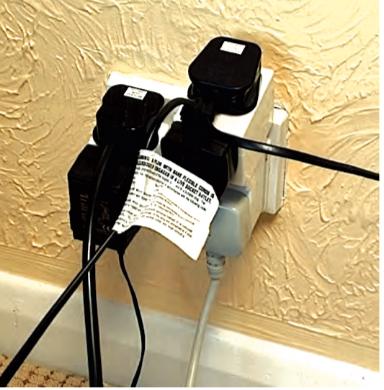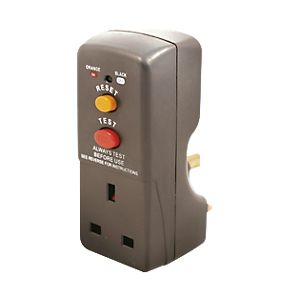The Electrical Safety Council do a
Best Practice Guide which seems to be what most electricians follow when giving a code.
I am not sure I totally agree with the guide to me multi way adaptors and wandering leads are outside the remit when doing an installation inspection and test they are part of the in service inspection and testing of electrical equipment often referred to as PAT testing.
However if we are to include plugged in devices then we should include those which improve the installation as well as cause danger.
The main thing which has improved safety must be the earth leakage current braker (ELCB as was now called RCD) and the regulations have in stages required their use. At first it was just where we relied on an earth rod, then for out door items and finally nearly all sockets and cable in the wall.
Clearly to protect the cable in the wall means RCD fitted at the fuse box but for most other uses we can use the plug in type which come in a number of flavours most are 30mA and can be active (with power cut they switch off and need resetting) or passive (will stay switched on in a power cut) so if this
is a fail then these
will help it pass can't really have it both ways.
Personally I feel items which can be removed or fitted without the use of a tool are beyond the remit for a EICR however there is no question using the simple plug in devices will protect you in the same way as permanently installed devices except for when knocking nails in the wall or drilling a wall.
So question do you just want to make house safe or do you need an EICR which shows it is safe? If one has 30 sockets then £250 for plug in RCD's likely more expensive than having a new consumer unit. But used where there is added danger for example lawn mower then would seem worth while.
We have two types of supply TT and TN with a TN supply the earth is given to you by the supplier and any line wire touching earth would cause a fuse to blow. With a TT supply an earth rod is used and so less current can flow so a line wire touching earth may no cause a fuse to blow. So with a TT supply the RCD or ELCB what ever name you want to give the device is really important. This is why we asked for pictures of the in coming supply.
The TN is further divided into TN-S and TN-C-S and it is some times hard to work out which but between TT and TN there should be no problem and it should be noted on the EICR. He should have measured Ze and also entered that on the report and from that reading he would have got a really good idea of supply type. Below 0.35Ω likely TN-C-S below 0.8Ω then TN-S and above that TT. Ze is also called Earth Loop impedance but I have used Ze as that is how it likely appears on the report.




